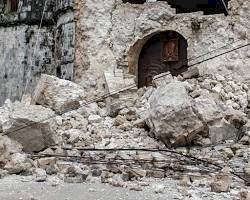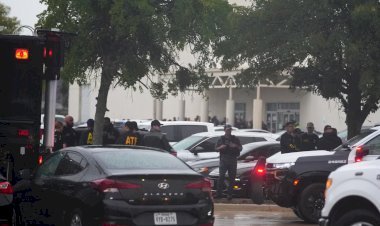Central Philippines Plunged into Crisis: Death Toll Hits 69 as Catastrophic 6.9 (magnitude earthquake philippines) Wreaks Havoc on Cebu
Official NDRRMC and PDRRMO updates on the M6.9 Cebu earthquake. Find the latest casualty reports, local damage assessments for Bogo & San Remigio, and real-time relief/recovery operations.

The central Philippine province of Cebu has been declared a state of calamity following a powerful and deadly magnitude 6.9 earthquake that struck late Tuesday night, leaving at least 69 people dead and dozens missing in the region. The tremor, one of the most destructive to hit the Visayas archipelago in over a decade, has compounded the misery of a region already reeling from back-to-back typhoons just days prior.
The shallow, violent quake, which struck at 9:59 PM local time, caused widespread devastation across the northern towns of Cebu, particularly Bogo City, San Remigio, and Medellin. The seismic event, reportedly set off by movement in a local, undersea fault line at a depth of as little as five kilometers, triggered mass panic, sent power grids offline, and forced thousands of terrified residents to spend the night huddled in open fields amid continuous, jarring aftershocks.
The Night of Terror and the Rising Toll
The official death toll stood at 69 as of mid-day Wednesday, according to figures consolidated by the Cebu provincial disaster office, although national authorities cautioned that the number remains "fluid" and is widely expected to rise as rescuers reach isolated areas. More than 150 individuals have been reported injured, with that figure also expected to climb significantly.
The epicenter of the quake was localized just off the coast, approximately 17 to 19 kilometers northeast of Bogo City, a densely populated coastal hub of about 90,000 people. Bogo and its immediate vicinity bore the brunt of the destructive force. Reports confirm that Bogo City alone accounted for the highest number of fatalities, with early estimates suggesting around 30 victims perished there.
The suddenness and severity of the nighttime tremor caught most residents asleep or preparing for bed. One resident of Cebu described the scene to the BBC, recounting how voices of "traumatised" and crying children could be heard everywhere as people fled their homes, fearing the collapse of their structures. With power and water supplies instantaneously cut off across multiple municipalities, the post-quake hours were spent in darkness and fear, punctuated by the hundreds of aftershocks that continued to rock the region, forcing survivors to refuse to re-enter any potentially unstable buildings. As of Wednesday, over 600 aftershocks had been recorded, the strongest being a magnitude 5.2, serving as a terrifying reminder of the unstable ground.
In the outlying towns, the casualty list paints a grim picture of sudden collapse. In Medellin, at least ten residents died, many reportedly struck by falling ceilings and walls as they slept. Meanwhile, in San Remigio, the confirmed death toll was tragically high, nearing two dozen.
Catastrophe at the Sports Complex and Vulnerable Communities
The San Remigio municipality was the site of one of the quake’s most heart-wrenching incidents. An emergency response official confirmed that a local basketball game was in progress when the earth began to shake violently. The San Remigio Sports Complex and Recreation Center partially collapsed, trapping and crushing players and spectators. Among the fatalities reported from this single incident were uniformed personnel, including three Coast Guard members and a firefighter, alongside a child. The suddenness of the event turned a community pastime into an instant tragedy, sending nearly 20 people to the hospital, where at least one victim later succumbed to their injuries.
The earthquake also starkly highlighted the ongoing vulnerability of disaster-displaced populations. Seven of the confirmed deaths in Bogo were residents of a village specifically constructed to house victims of Typhoon Haiyan, the catastrophic super storm that claimed over 6,000 lives 12 years ago. The fact that the houses built for disaster survivors could not withstand this powerful seismic event underscores the structural deficiencies and the immense challenge of disaster-resilient construction in the archipelago.
Infrastructure Paralysis and the Loss of Heritage
The widespread damage to essential infrastructure has critically hampered rescue and relief operations, complicating the race against time—known as the "golden hour"—to find survivors. Authorities reported buckled and cracked roads, fallen bridges, and power lines down across many locations, making access for heavy rescue equipment, such as backhoes and boom trucks, extremely difficult. Rescuers were particularly challenged in reaching a mountain village in Bogo, which was blocked by large landslides and boulders. Furthermore, two seaports in Bogo and San Remigio were rendered non-operational, slowing the delivery of relief goods.
The crisis has also overwhelmed the local healthcare system. The Cebu Provincial Hospital in Bogo City was described by officials as being severely "overwhelmed" by the influx of injured patients. Fearing further harm from the frequent aftershocks, hospital staff were forced to treat injured children and screaming adults outdoors on beds and makeshift stretchers laid out beneath blue tents on the facility’s driveway. Due to the high volume of serious injuries, medical teams were compelled to evacuate and transfer some patients to larger facilities in the provincial capital of Cebu City, nearly 100 kilometers to the south, a logistical nightmare on the damaged roads. The Cebu provincial government has urgently appealed for medical volunteers with experience to assist the beleaguered staff.
Adding to the physical destruction is the irreversible loss of historical structures. Cebu was one of the first Philippine islands colonized by Spain in the 16th century and is home to many centuries-old Catholic churches. Disturbing footage circulated online showing the tower of an old Catholic church swaying violently and then partially collapsing in one locality. The Archdiocesan Shrine of Santa Rosa de Lima in Daanbantayan and the Parish of Saint Peter the Apostle in Bantayan were among the centuries-old religious structures that sustained major damage, their stone crumbling under the intense tremors. Cebu's Archbishop has issued a significant public warning, advising all devotees to stay away from churches until thorough structural assessments can be completed.
Search, Rescue, and the Dual Disaster Context
National police and fire bureau officials have mobilized rapidly, prioritizing search and rescue operations, the restoration of electricity, and the delivery of essential relief supplies. Army troops, police, and civilian volunteers, equipped with sniffer dogs, have been deployed to conduct house-to-house searches for anyone trapped beneath the debris of collapsed homes and buildings, including commercial establishments like a heavily damaged mall and a fast-food restaurant.
President Ferdinand Marcos Jr. has assured survivors of swift governmental assistance, with cabinet secretaries on the ground directing the response. The Philippines has also received condolences and offers of support from international allies, including the United States, Japan, and Australia, signaling potential foreign aid depending on the government's rapid damage assessment.
This catastrophic earthquake comes barely more than a week after the central Philippines was hit by back-to-back tropical storms/typhoons that killed at least 27 people and forced the evacuation of hundreds of thousands. The area, still recovering from the flooding and power cuts of the earlier storms, was uniquely vulnerable to the earthquake's impact. The combination of waterlogged ground from the typhoons likely contributed to landslides and the instability of already compromised structures, amplifying the death and destruction.
The Philippines’ geography places it in a constant state of hazard. It lies along the Pacific “Ring of Fire,” an expansive arc of intense seismic activity characterized by frequent earthquakes and volcanic eruptions, as well as being situated directly in the path of approximately 20 typhoons that sweep across the Pacific Ocean annually. The tragedy in Cebu serves as a stark and painful reminder of the immense challenges the nation faces in building resilience against the constant onslaught of natural disasters.

 Selina Smith
Selina Smith 




![10 Interesting Facts That Make Virginia One of America’s Most Unique States [2025]](https://statesidemagazine.com/uploads/images/2025/06/image_380x226_684aaad0d92fe.jpg)




![AutoZone Business Hours [2025]: Complete Guide to Store Times, Holidays & Tips](https://statesidemagazine.com/uploads/images/2025/06/image_140x98_6852d31a1eb7b.jpg)





